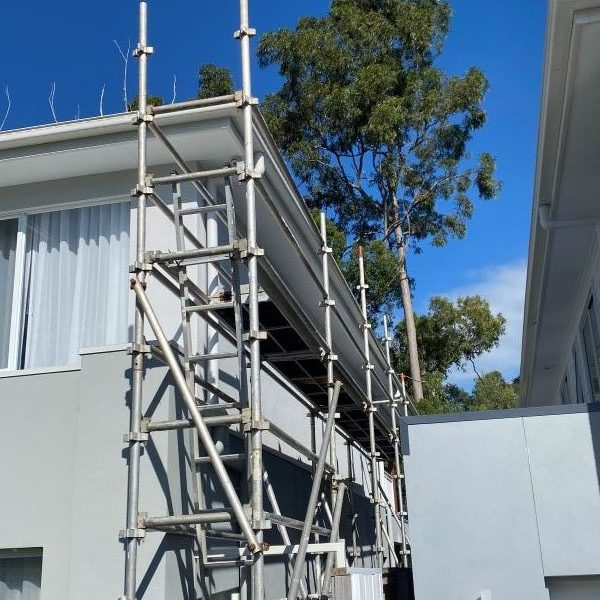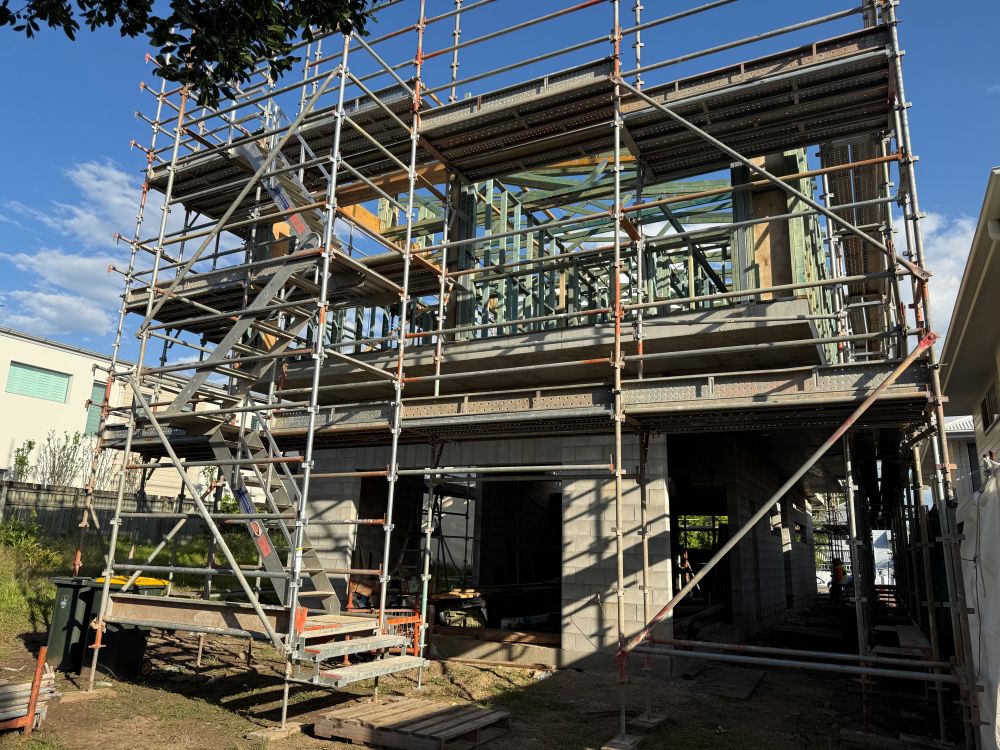Enhancing Scaffold Load Capacity for Optimal Safety and Legal Compliance in Construction Projects
Scaffold load capacity is a critical aspect that outlines the maximum weight a scaffold can safely bear during various construction activities. This vital measurement encompasses three significant categories of loads that require careful analysis and attention:
- The weight of the scaffold itself, often termed the dead load, which includes all components of the scaffold structure.
- The weight of workers, tools, and materials placed on the scaffold, recognized as the live load that contributes to the overall load capacity.
- External forces such as wind, rain, or vibrations that impact the scaffold’s stability, categorized as environmental load.
Grasping these load categories is essential, as they significantly affect the total stress exerted on a scaffold while it is in use. Adhering to these calculations is not merely a recommendation; it is mandated by Australian law to safeguard the well-being of all personnel involved in construction operations.

Comprehensive Guide to Effectively Utilizing Our Scaffold Load and Height Calculator
While there is no universal formula applicable to every scaffold configuration, our scaffold calculator offers an intuitive tool that simplifies the process of obtaining precise load estimates by accounting for key variables. This resource is specifically designed for residential builders, homeowners, and scaffold hire professionals who must adhere to the standards established by Australian OHS regulations.
Step 1: Define the Type of Work Being Performed
Determine the specific nature of the work, which may encompass tasks such as roof restoration, external painting, solar panel installations, cladding, or rendering, all of which require different scaffold setups.
Step 2: Input the Number of Workers
For instance, you might indicate that two workers will be operating simultaneously on the scaffold platform to ensure efficient workflow.
Step 3: Assess the Weight of Materials to be Used
This could involve estimating around 120 kg of rendering materials or tools that will be utilized throughout the project, ensuring accurate load calculations.
Step 4: Specify the Height of the Scaffold Platform
For example, the height might be set to 4.5 metres above ground level, which is crucial for determining load distribution and stability.
After entering this data, the calculator will produce a tailored scaffold configuration that includes:
- The appropriate duty class (such as Light, Medium, or Heavy)
- An approximation of the Safe Working Load (SWL) for each bay
- The recommended type of scaffold (for instance, aluminium tower or steel frame)
- Essential safety features required (including guardrails, soleplates, and stabilisers)
- Any compliance indicators related to height (for example, tie-offs mandated for heights above 4 metres)
Understanding the Reasons Behind the Absence of a Universal Load Formula for Scaffolding
Although the scaffold calculator serves as a practical tool for generating estimates, scaffolders and engineers do not depend exclusively on a single formula for their calculations. This necessity arises from several key factors:
- Scaffold systems differ significantly based on material and design, which can include aluminium, steel, modular, and tube-and-coupler systems, each having distinct load characteristics.
- The intended use of the scaffold greatly influences its load capacity—for example, the load requirements for painting differ from those for masonry work.
- Different manufacturers have varying platform strength and component ratings, which can lead to inconsistencies in load calculations.
Industry Standard Methodology for Calculating Safe Working Load (SWL)
Professionals in the field often utilize the following formula as a foundational guideline for estimating load capacity:
Safe Working Load (SWL) per bay = (Platform Load Rating × Safety Factor) – Scaffold Component Weight
Example Breakdown:
- A scaffold platform rated for a maximum load capacity of 600 kg
- Applying a 4:1 safety margin: only 25% of the rating yields a usable load of 150 kg
- Subtracting the scaffold structure’s weight, which amounts to 100 kg
- The final usable working load is 50 kg, a conservative estimate that may not reflect the actual planning requirements.
Due to the complexities presented by real-world conditions, experienced scaffolders typically follow manufacturer guidelines, engineering tables, and local codes rather than relying solely on this simplified formula.

Essential Best Practices Adopted by Professionals in Scaffold Evaluations
Professional scaffold evaluations usually encompass several critical components to ensure safe and compliant scaffold use:
- Thoroughly reviewing manufacturer load data and verified span ratings for correctness and reliability
- Calculating the total live, dead, and environmental loads to guarantee overall safety
- Ensuring compliance with AS/NZS duty class specifications to meet established industry standards
- Securing engineering sign-off for any custom or elevated scaffold configurations to validate their safety
- Conducting comprehensive visual and structural inspections before scaffold use to identify any potential hazards that could jeopardize safety.
Adjusting Scaffold Practices to Suit Environmental Conditions and Site-Specific Factors
Addressing Wind Exposure in Coastal Queensland
In areas classified within wind zones N3 and N4, the lateral forces impacting scaffolds are considerably increased. Consequently, scaffolds must be anchored at shorter intervals, and additional bracing or shade cloth may be required, especially during high-wind periods, to maintain structural stability.
Considerations for Soil and Ground Stability
When working with unstable or sloped soil conditions, it is crucial to utilize soleplates and adjustable base jacks to enhance scaffold stability. Furthermore, sites with varying elevations might necessitate the implementation of leveled bay systems to ensure a secure working environment.
Regulations for Elevated Work Platforms Exceeding Four Metres
In Queensland, any platform that rises above four metres in height requires comprehensive inspection and certification. A scaffold handover certificate is mandatory under the Work Health and Safety Regulation 2011, ensuring adherence to safety protocols.
Key Safety Regulations to Follow for Scaffold Use
- Work Health and Safety Regulation 2011 (QLD) outlines the legal framework for safety
- Managing the Risk of Falls at Workplaces (Code of Practice, 2021) provides detailed guidance on fall prevention
- AS/NZS 1576 and AS/NZS 4576 Standards govern scaffold safety practices
- High Risk Work Licence (HRWL) is mandatory for any scaffold installations above four metres to ensure skilled handling
Site supervisors bear the responsibility of conducting regular inspections, especially after adverse weather conditions or significant alterations to scaffold height or load, ensuring continued compliance with safety regulations.
Insightful Case Study: Scaffold Application in Robina
In a recent construction project located in Gold Coast, a homeowner in Robina required scaffolding to repaint and render the exterior wall of a two-storey building. The working height for this project was determined to be five metres, and two tradespeople utilized approximately 200 kg worth of rendering materials and tools throughout the undertaking.
By employing our scaffold calculator, the recommended configuration was established as follows:
- Scaffold class: Medium Duty, deemed suitable for the job at hand
- System type: A robust steel frame accompanied by timber planks for enhanced durability
- Additional safety measures: Inclusion of full edge protection, soleplates for soft earth conditions, and wind mesh to minimize wind exposure
The scaffold successfully met all necessary inspections and complied with Queensland’s OHS regulations, resulting in smooth progress without any downtime during the project duration.
Critical Factors to Consider for Scaffold Height and Load Capacity Calculations
Determining the appropriate scaffold height and load capacity must never be approached with guesswork. In residential projects, this meticulous process is crucial for ensuring safety, effectively managing costs, and achieving compliance with local regulations.
Given the unique requirements pertinent to Australian conditions, particularly in southeast Queensland, we strongly recommend obtaining a precise scaffolding quote and ensuring that all installations are conducted by qualified professionals.
Reach Out to CanDo Scaffolding Hire for Expert Assistance and Services
For additional information regarding our comprehensive range of services, please contact us at 1300 226 336 or send an email to theguys@cando.com.au at your convenience.
We provide an extensive selection of scaffolding solutions, including void protection platforms and roof edge protection, tailored to fulfill the requirements of any residential or light commercial construction project.
Understanding Scaffold Load Capacity for Residential Projects
The Article: Scaffold Load Capacity Insights for Residential Projects first appeared on https://writebuff.com
The Article Scaffold Load Capacity for Residential Construction Projects Was Found On https://limitsofstrategy.com

